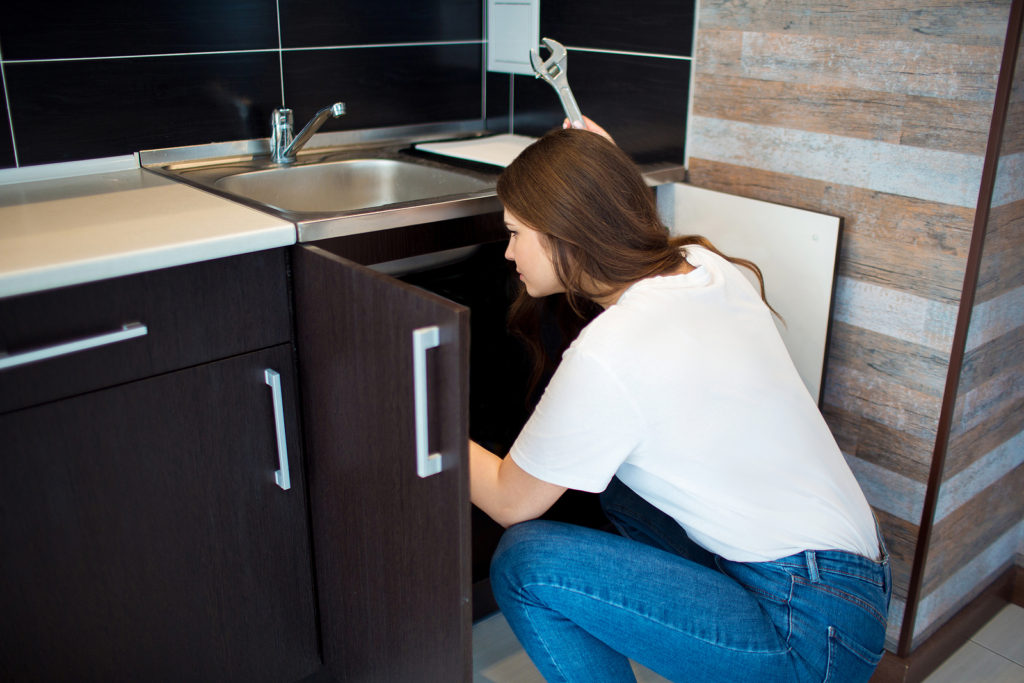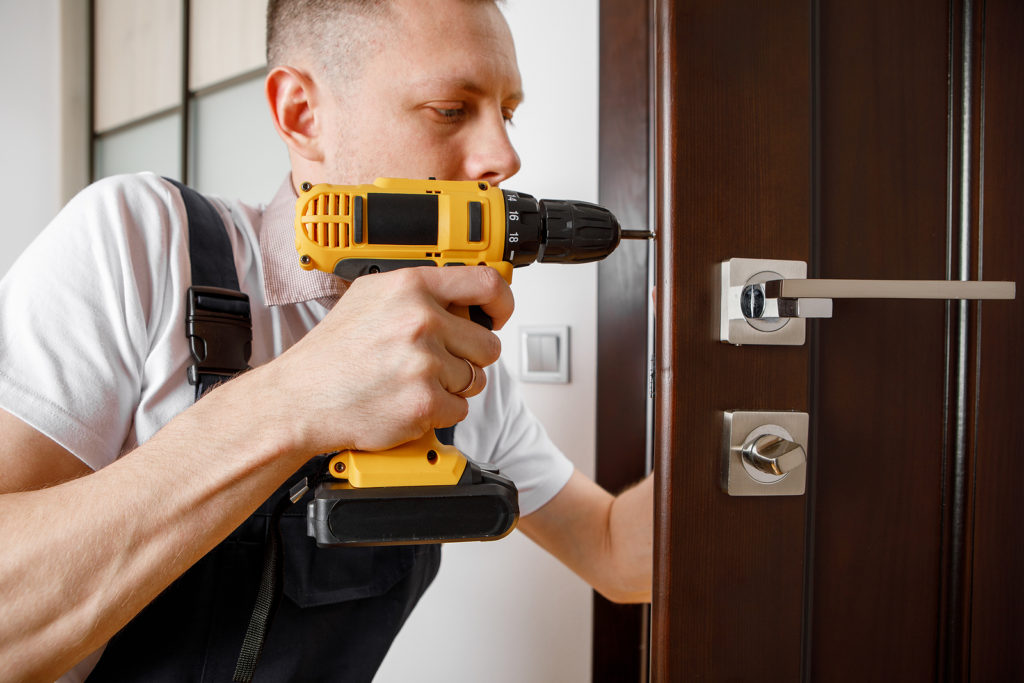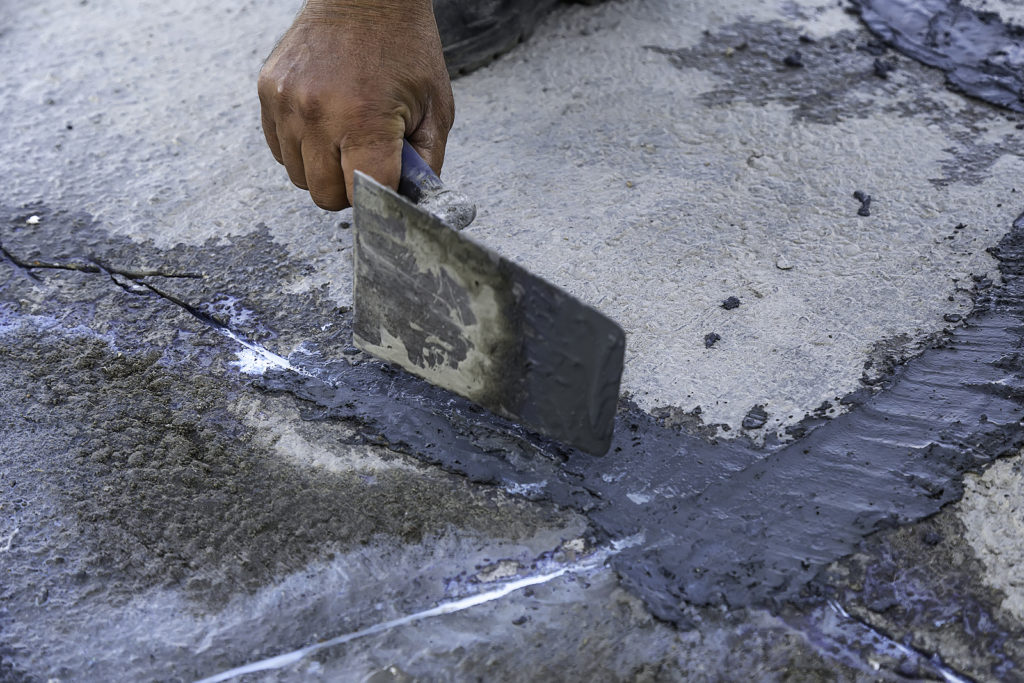Everybody has a cabinet below the kitchen sink. This is the storage area that houses everything from trash bags and kitchen counter cleaners to sponges, scrub brushes, air fresheners, and other types of household supplies. The kitchen sink cabinet is an important space, but because of its location is also prone to water leaks and subsequent damage. Not only is a wet kitchen sink cabinet floor unpleasant, but it is also a situation that can lead to costly water damages.
Fortunately, there is one very simple and inexpensive hack that can prevent kitchen sink cabinet water damage. Continue below to learn what it is, and marvel at the simplicity and affordability of it all!

Peel and Stick Vinyl Tile
Yes, you read the heading correct. Visit your local home improvement store and pick out any variety of peel and stick vinyl tile flooring. This is the ultimate water leak and moisture protector and abatement system for kitchen sink cabinets! But before selecting your choice of peel and stick vinyl tiling, it is recommended to first measure your kitchen sink cabinet surface area. This way, you won’t end up buying a roll or box of peel and stick vinyl tile that is much larger than the amount of product you actually need. Oppositely, you don’t want to buy too little and be face with the second trip to the store for some more.
Vinyl Tiling Installation for Kitchen Sinks
Once you have selected your peel and stick vinyl tile product, your first step to installing it is to thoroughly clear out the contents below your kitchen sink cabinet.
After you have cleared out all of the contents below your kitchen sink cabinet, proceed with comprehensive dusting and surface cleaning. The floor surface of the kitchen sink cabinet must be clean in order for the adhesive of the vinyl tiling to stick.
Now you are ready to remove the paper backing from your vinyl tiling and stick it directly to the floor surface of your kitchen sink cabinet. Work from the back to the front. You may need to do some cutting prior to application, depending on the size and shape of your kitchen sink cabinet surface. Be sure to include a hole for the piping and garbage disposal system if they connect at the surface of the cabinet.
As you are installing your vinyl tiling, be sure to press it firmly to the surface floor of your kitchen cabinet so that it adheres evenly and remain secure. You can expect the vinyl tiling to last for many years with some light dusting and cleaning along the way.
Are you looking for a professional general contractor who can help you with some kitchen renovations or remodeling work? Contact Restoration By L & B, LLC at 317-454-3612 for affordable residential and commercial kitchen remodeling services in Indianapolis, Indiana.
You Might Also Read:
How to Remove Backsplash Tile in the Kitchen
The Best Low Maintenance Options for High End Kitchen Countertops
How to Remove Furr Down Over Kitchen Cabinets










